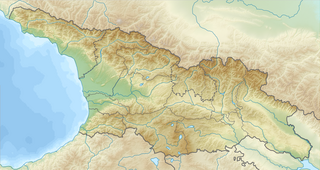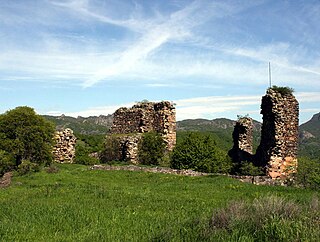 W
WThe Battle of Ain Jalut, also spelled Ayn Jalut, was fought between the Bahri Mamluks of Egypt and the Mongol Empire on 3 September 1260 in southeastern Galilee in the Jezreel Valley near what is known today as the Spring of Harod. The battle marked the height of the extent of Mongol conquests, and was the first time a Mongol advance had ever been permanently beaten back in direct combat on the battlefield.
 W
WThe Siege of Baghdad was a siege that took place in Baghdad in 1258, lasting for 13 days from January 29, 1258 until February 10, 1258. The siege, laid by Ilkhanate Mongol forces and allied troops, involved the investment, capture, and sack of Baghdad, which was the capital of the Abbasid Caliphate at that time. The Mongols were under the command of Hulagu Khan, brother of the khagan Möngke Khan, who had intended to further extend his rule into Mesopotamia but not to directly overthrow the Caliphate. Möngke, however, had instructed Hulagu to attack Baghdad if the Caliph Al-Musta'sim refused Mongol demands for his continued submission to the khagan and the payment of tribute in the form of military support for Mongol forces in Persia.
 W
WThe Battle of Chikhori was fought between the armies of King George VIII of Georgia and the rebellious nobles led by a royal kinsman Bagrat in 1463. It took place near the fortress Chikhori in the district of Argveti in western Georgia, and ended in the king's decisive defeat.
 W
WThe Battle of Didgori was fought between the armies of the Kingdom of Georgia and the Great Seljuq Empire at the narrow place of Didgori, 40 km west of Tbilisi, on August 12, 1121. The large Muslim army, under the command of Ilghazi, was unable to maneuver, and suffered a devastating defeat due to King David IV of Georgia’s effective military tactics.
 W
WOn April 15, 1277, the Mamluk Sultan Baibars marched from Syria into the Mongol-dominated Seljuk Sultanate of Rûm and attacked the Mongol occupation force in the Battle of Elbistan (Abulustayn). Upon reaching Elbistan with at least 10,000 horseman, Baibars made ready for battle with the Mongols, expecting them to be around 30,000. However, although the Mongol forces were smaller than the Mamluk army, there were the Georgians and Rum Seljuks that bolstered their numbers.
 W
WThe Battle of Bolnisi was fought in 1228 near Bolnisi, then part of the Kingdom of Georgia. The invading Khwarazmid Empire was led by Jalal ad-Din Mingburnu, its last Sultan, who was driven from his realm by the Mongol Empire and was trying to recapture lost territories. Georgia assembled its own coalition against Jalal ad-Din: Georgians, Kipchaks, Alans, Vainakhs and Leks assembled 40,000 men. Ill-prepared for battle, the coalition went south to Bolnisi where Jalal ad-Din's forces were waiting. Jalal ad-Din saw Kipchak banners, consisting 20,000 men in the Georgian ranks and appealed to them, 'lending a certain Qoshqar to them with a loaf of bread and salt to remind them of their 'former obligations' to his house. The Kipchaks withdrew support from the Georgians. The battle ended with a Khwarezmid victory and is marked as a disastrous event in Georgian history due to betrayal.
 W
WThe Battle of Garni was fought in 1225 near Garni, in modern day Armenia, then part of the Kingdom of Georgia. The invading Khwarazmid Empire was led by Jalal ad-Din Mingburnu, its last Sultan, who was driven from his realm by the Mongol Empire and was trying to recapture lost territories. The battle ended with a Khwarezmid victory and is marked as a disastrous event in Georgian history due to betrayal. As a result, the royal court of Georgian Queen Rusudan (1223–1245) moved to Kutaisi and the country was exposed to subsequent looting during the Mongol invasion.
 W
WThe Second Battle of Homs was fought in western Syria on 29 October 1281, between the armies of the Mamluk dynasty of Egypt and the Ilkhanate, a division of the Mongol Empire centered on Iran. The battle was part of Abaqa Khan's attempt at taking Syria from the Mamluks.
 W
WThe Battle of Kapetron or Kapetrou was fought between a Byzantine-Georgian army and the Seljuq Turks at the plain of Kapetron in 1048. The event was the culmination of a major raid led by the Seljuq prince Ibrahim Inal into Byzantine-ruled Armenia. A combination of factors meant that the regular Byzantine forces were at a considerable numerical disadvantage against the Turks: the local thematic armies had been disbanded, while many of the professional troops had been diverted to the Balkans to face the revolt of Leo Tornikios. As a result, the Byzantine commanders, Aaron and Katakalon Kekaumenos, disagreed on how best to confront the invasion. Kekaumenos favoured an immediate and pre-emptive strike, while Aaron favoured a more cautious strategy until the arrival of reinforcements. Emperor Constantine IX chose the latter option and ordered his forces to adopt a passive stance, while requesting aid from the Georgian ruler Liparit IV. This allowed the Turks to ravage at will, notably leading to the sack and destruction of the great commercial centre of Artze.
 W
WThe Battle of Köse Dağ was fought between the Sultanate of Rum ruled by the Seljuq dynasty and the Mongol Empire on June 26, 1243 at the defile of Köse Dağ, a location between Erzincan and Gümüşhane in modern northeastern Turkey. The Mongols achieved a decisive victory.
 W
WThe Battle of Mokhisi was fought between the armies of the Kingdom of Kartli and the Principality of Guria at the place of Mokhisi in 1520.
 W
WThe Battle of Partskhisi was fought between the armies of Kingdom of Georgia and Seljuk Empire. After hours of intense fighting, Georgians won a decisive victory over the Turks.
 W
WThe Siege of Tbilisi was the successful siege of the city of Tbilisi, capital of the Kingdom of Georgia, by the Turco-Mongol conqueror Tamerlane, which ended on 22 November 1386. The official history of his reign, Zafarnama, represents this campaign in Georgia as a jihad.
 W
WThe siege of Trebizond in April 1282 was an unsuccessful siege of Trebizond, the capital of the namesake empire, by the Georgian king David I of Imereti. Little is known about the attack, but it may have relied on support within the Trapezuntine aristocracy, which opposed the rapprochement of Emperor John II of Trebizond with the Palaiologan Byzantine court at Constantinople. Though King David failed to take the city, the Georgians occupied several provinces.
 W
WThe Battle of Wadi al-Khaznadar, also known as the Third Battle of Homs, was a Mongol victory over the Mamluks in 1299.